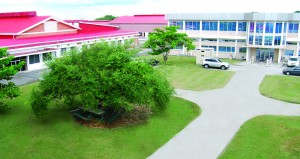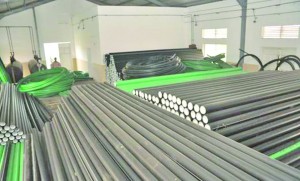The compliment by the director of the Guyana Learning Channel Dr Seeta Roath to TVG/Channel 28 on the utilisation of its satellite uplink capabilities to convert her vision into reality to take education to the most remote corners of Guyana is instructive for several reasons.
First, there is her statement that, when she first broached the idea, she was seen as a “mad woman”. In Guyana, there are those that are so imbued with the notion that Guyana is “third world” that they reflexively conclude that the country can only be third rate in its efforts.

But one of the most exciting developments in today’s globalised world, especially in the area of information and communication technology (ICT), is the potential to leapfrog generations of intermediate solutions and seamlessly mesh with the latest cutting-edge technology.
Communications
And this is where satellite communications literally enter the picture. Satellites in geosynchronous orbit have long been used abroad. Beginning with transmitting data on weather, the private sector in the last couple of decades in the developed world, placed their own satellites in space and rented the transponders and other communication equipment to a variety of users, starting from telephone companies that wanted to transmit data across long distances. The facility was ideal to serve remote areas and, at present, the use of satellites has grown to serve radio, television, Internet and most recently, digital cinema.
In Guyana, signals from these satellites had been down-linked for decades (generally illegally) and then rebroadcast. But uplinking (or sending signals to the satellite) was a different story. One had to lease transponder space on a satellite and then arrange for the signals to then be re-transmitted (downlinked). This demanded the requisite finances, technical know-how and capacity to constantly monitor the system.
For a country like Guyana, installing such a facility took faith in the ability of the country to grow and its desire to reach out to its long neglected citizens in the far-flung regions, especially the interior. Queens Atlantic Investment Inc (QAII) had a vision to construct a seamless integrated communications company to serve the country and to grow with it.
As such, it was only too happy to work with the learning channel to fulfil its vision of connecting with students in the interior.
NEW GPC
But the second lesson from this episode to note is that QAII applies the same forward-looking strategic focus in all the businesses it has chosen to bring under its umbrella. Take for instance, the NEW Guyana Pharmaceutical Company (NEW GPC), which had fallen onto hard times when it was privatised and acquired in 1999.
The renamed NEW GPC immediately pumped millions into the company and within two years was able to begin the manufacture of HIV/AIDS retrovirals and Bird Flu medication to a quality comparable to any in the first world. Today, the company continues to expand its manufacturing capabilities, as well as sustaining the over-the-counter range of products it inherited.
Just as significantly, it was able to retain its old position as the largest supplier of pharmaceutical products to the government’s health sector. In recent years, this has been criticised by some with short memories who forget that very few of the dozens of companies privatised by the government in the 1990s survived, much less prospered. NEW GPC continues its bequeathed Guyanese tradition.
NEW GPC was willing to invest billions into the most extensive and modern warehousing facility for the government’s pharmaceuticals which it offered free of charge to them. It is not appreciated how complex was the infrastructural network to man the pharmaceutical supply chain for the government. With the announcement that the government has constructed its own warehouse, it shall have a basis of comparison. No other private pharmaceutical company is in a position to offer the services of such a warehouse.
Guyana Times
Then there is the newspaper QAII founded in 2008: Guyana Times. The company imported the most modern printing press the country had ever seen and is the only one to use bond paper to produce the highest quality local and regional newspaper. Its insistence on producing a newspaper of record and not to descend into the yellow journalism that typifies the tabloid approach, has given the news consumer a choice.
But the corporation was very cognisant of the pressures confronting the print media, such as the New York Times, in the developed countries and knew that it was only a matter of time that those challenges migrated into Guyana.
It had defined itself as a ‘communication’ company and expanded into the alternate means of communication that had been opened up abroad and which had successfully challenged print journalism. This was the strategy that dictated the company’s move into television, radio and satellite broadcasting. The company is determined to create a world-class communication company in Guyana.
Sanata Complex, GHI
QAII’s insistence on raising the bar in Guyana can also be seen in its expansion beyond pharmaceuticals in 2007, when it took over the abandoned Sanata Complex. It voluntarily replaced all the dangerous asbestos materials that had dominated the facility at a cost of billions of dollars and constructed its ultra-modern corporate headquarters, as well as introduced several manufacturing lines.




